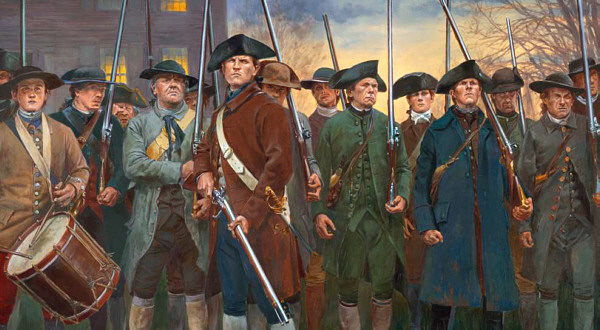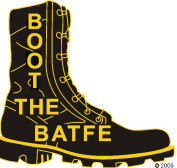

'Gun Control' Had a Lot to do
With the Shot Heard 'Round the World

(Don Troiani)
By Stephen P. Halbrook. June 23, 2025
"Disperse you Rebels—Damn you, throw down your Arms and disperse!" shouted British Major John Pitcairn at the militiamen who were assembled on Lexington's common. "Upon which the Troops huzz'd, and immediately one or two Officers discharged their Pistols, which were instantaneously followed by the Firing of four or five of the Soldiers, then there seemed to be a general discharge from the whole Body."
So went a widely published American version recounting that fateful day of April 19, 1775.
The militiamen who fought the British at Lexington and Concord consisted of able-bodied males aged 16 through 60. All provided their own private muskets, except for a few poor men who had to borrow them from other colonists or the town. Militia Col. James Barrett's 15-year-old granddaughter, Meliscent, taught the other young women of the town how to assemble cartridges. One of the wounded at Lexington was listed as "Prince Easterbrooks (a Negro-Man)."
After the skirmish at Lexington, the Redcoats marched on Concord, where they searched houses and destroyed arms and military stores. One account verified that "even women had firelocks. One was seen to fire a blunderbuss between her father and husband from their windows." As many as 3,500 militiamen fought the Redcoats.
Frederick MacKenzie, a British fusilier, recorded that, during the British retreat back to Boston, the Americans ambushed them from houses and behind walls and hedges.
. . . . 
![]()
























